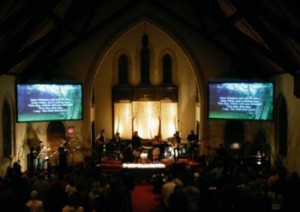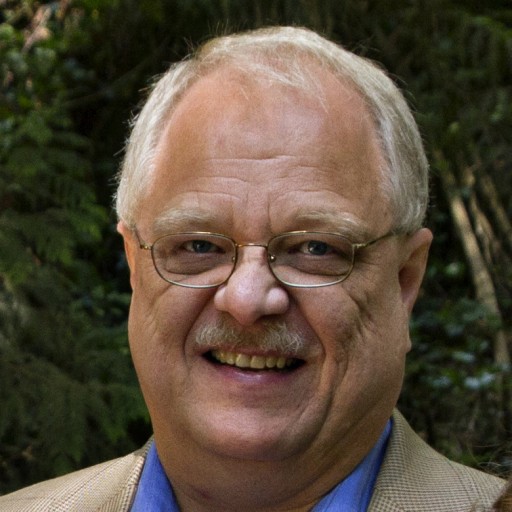Drinking from the Well, Part 3
 I thought that I’d go on to other topics when I finished “Drinking from the Well, Part 2,” but in his comment on Part 2 Mike King asked about my reflection on the Eucharist at Jacob’s Well. So here’s Part 3.
I thought that I’d go on to other topics when I finished “Drinking from the Well, Part 2,” but in his comment on Part 2 Mike King asked about my reflection on the Eucharist at Jacob’s Well. So here’s Part 3.
Let me begin by going back to the sermon. I have the sense that Jacob’s Well would not be the Christian community it is without the preaching of Tim Keel. His choice of sermon topic gets at an integral piece of our relationship with God. He provided the big picture of “hiddenness” in the Scriptures, then in that context drilled down for his main message for this day. This was not a biblical studies lecture, however, but a clear challenge that we move closer to God in spite of the cultural currents trying to pull us in another direction.
Tim made one statement that I’ve thought a lot about this week: the psalmist often cried out that God not hide from him because then the psalmist would lose his hiding place. That explains the desperation in the psalmist’s tone of voice. Do we realize how vulnerable we are on our own? Our answer to that question will probably translate into moving closer to God … or not.
So, if Tim Keel is key to what’s happening in the worship gatherings at Jacob’s Well, what keeps it from becoming personality driven? In a world of huge egos, going back to the introduction of this sermon, how does the preacher keep perspective?
Part of the answer to those questions is the importance placed on the Eucharist in worship. The regular reminder that Jesus gave body and blood orients our view of everything else. Not only does the celebration of the Lord’s Supper alter the way I look at things, but the shared meal profoundly shapes the community.
I grew up in congregations where communion was served to the people in the pews. Silver trays with thimbles of Welch’s grape juice and a silver plate with edible Styrofoam were handed to men who in turn passed them down each row of people. I can still hear my father/pastor say, “Please hold the elements until all have been served, and then we will partake together.”
The only variation to this that I can remember was a Maundy Thursday service Dad used for years. He found the script in some pastoral resource materials in the 1950s. He does not know the word “tenebrae” and didn’t recognize the historic character of this service of darkness he used. Twelve candles were set on the altar rail across the front of the sanctuary. The Christ candle was already lit when the congregation arrived. The 12 candles were lit during the service as the names of the disciples were read in the Scripture passages about Jesus calling these men to follow him. During communion the congregation would come to the front in groups of twelve and kneel at the altar to receive communion. All this was done in silence, something unusual for us because the organist typically kept the electronic organ humming through most prayer times. One of the earliest memories I have as a worship leader involved snuffing out the candles at the appropriate time: one candle to represent Judas’ departure, then later the other eleven disciple candles when they left Jesus. The visual image of the single Christ candle in the dark sanctuary still burns bright in my memory. (I lit the candles too. Why do I remember the “snuff” more vividly than the “light”?)
But that type of communion service was the exception for us. Most of the time the men brought the communion trays to the congregation as we passively waited to receive. As I reflect on these experiences, it really was a highly individualized experience. Even those sitting nearby didn’t “serve” you, merely held the tray so you could take the stuff. And eating and drinking only after all had been served … that wasn’t a community experience, but individuals arranged in straight rows moving in unison, like marionettes responding to the tug on a string. There’s much more to community than unison actions.
At Jacob’s Well the communion elements were prepared and sitting on the communion table positioned front and center on the edge of the platform. Six people — four women and two men — came to the front. First observation: those who would served the congregation came from among the congregation. Tim Keel went to the communion table to get a large section of bread and a chalice of grape juice, served one of those assisting with the Eucharist who then went to stand at a place at the front of the sanctuary. Tim repeated this process until all the assistants were in position. Starting from the back, people came down the center aisle, standing quietly until one of the servers was available. Second observation: there is benefit in coming to the Table, to physically respond to the invitation of Christ.
The elements were received by intinction, that is, taking a piece of bread and dipping it into the juice before eating it. Third observation: the common loaf and common cup have great significance for the community. (At Jacob’s Well I pulled a tiny piece of bread off of the loaf. I hardly had anything to dip in the juice. Note to self: commemorating the Lord’s sacrifice is not the time to go dainty.) As we each received the elements, the server reminded us that it was Jesus’ body and blood that brought reconciliation with God.
As I sat and watched the procession, I noted the number of couples who received communion together. I noticed the fathers — there may have been mothers, too — I noticed the fathers who carried infants in their arms as they made their way to the front. In many ways a baby exudes innocence, but as that child grows he or she will need to confront the sin nature. Jesus died that that baby can respond to grace that calls us to be reconciled with God.
Old and young. Suits and jeans. Moving out of modernity and fully post-modern. Pierced and not. Single and married. Urban, suburban and small town. That’s the Body of Christ. That’s Jacob’s Well.

